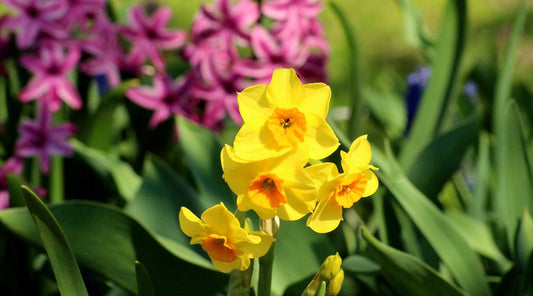Understanding the Impact of Drought on Your Garden
Drought can take a toll on your garden, stressing plants and making them more susceptible to diseases and pests. Understanding how drought affects different types of plants is crucial in mitigating its impact. During a drought, plants struggle to absorb water through their roots, leading to wilting, yellowing leaves, and stunted growth. To prepare your garden for these conditions, focus on enhancing its resilience and efficiency.Choosing Drought-Resistant Plants
One of the best ways to ensure your garden thrives during a drought is to choose drought-resistant plants. These plants are adapted to survive with minimal water and can be a beautiful addition to your garden. Consider adding succulents, lavender, yarrow, and rosemary to your plant lineup. These plants not only require less water but also add texture and fragrance to your garden.When planting drought-resistant species, remember to group them together. This practice, known as xeriscaping, ensures that plants with similar water needs are in the same area, making it easier to manage watering.
Effective Watering Techniques

- Water Early or Late: Water your garden early in the morning or late in the evening to minimize evaporation. During these times, the temperatures are cooler, and the water has a better chance of reaching the roots.
- Drip Irrigation and Soaker Hoses: Invest in a drip irrigation system or soaker hoses. These methods deliver water directly to the plant roots, reducing wastage. Drip irrigation systems can be customized to suit your garden's layout and are perfect for precise watering.
- Deep Watering: Water deeply but less frequently. This encourages roots to grow deeper into the soil, making plants more drought-resistant. Aim to soak the soil to a depth of at least 6 inches. Our deep root irrigator can get water down closer to the roots for great results.
Mulching for Moisture Retention
Mulching is a simple yet effective way to retain moisture in your garden soil. It also helps suppress weeds and regulate soil temperature. Organic mulches, such as straw, wood chips, and shredded leaves, are excellent choices. They decompose over time, enriching the soil with nutrients.To apply mulch, spread a 2-4 inch layer around your plants, leaving a small gap around the stem to prevent rot. This layer acts as a barrier, reducing evaporation and keeping the soil cool.
Soil Improvement for Better Water Retention
Healthy soil is the foundation of a drought-resistant garden. Improving your soil's structure and fertility enhances its ability to retain water. Start by adding organic matter such as compost, aged manure, and peat moss. These materials increase the soil's capacity to hold water and provide essential nutrients to your plants.Another effective technique is to practice no-till gardening. By avoiding tilling, you preserve the soil structure and promote the growth of beneficial microorganisms that help with water retention.
Utilizing Rainwater and Greywater
Maximize water resources by collecting and using rainwater and greywater. Rainwater harvesting systems can be as simple as placing barrels under downspouts to collect runoff from your roof. Use this collected water to irrigate your garden during dry periods.Greywater, which is lightly used water from sinks, showers, and laundry, can also be repurposed for garden use. Ensure that the greywater doesn't contain harsh chemicals or detergents that could harm your plants. Simple systems can divert greywater to your garden beds, providing an additional water source.
Smart Garden Layout and Design
Designing your garden with water conservation in mind can make a big difference. Implement these strategies:- Group Plants by Water Needs: Arrange plants with similar water requirements together. This reduces the likelihood of overwatering or underwatering specific plants.
- Companion Planting: Use companion planting techniques to create plant communities that support each other. Some plants can provide shade or wind protection, reducing water loss.
- Create Shade and Windbreaks: Use taller plants, trellises, or garden structures to provide shade and protect your garden from drying winds. This helps reduce evaporation and keeps the soil moist for longer periods.
Monitoring and Maintaining Garden Health

Maintain a consistent watering schedule, adjusting as needed based on weather conditions and plant health. Mulch and soil amendments should be replenished periodically to ensure continued benefits.
Conclusion
Drought conditions can be challenging, but with the right strategies, your garden can continue to flourish. By choosing drought-resistant plants, using efficient watering techniques, mulching, improving soil, utilizing rainwater, and designing a smart garden layout, you can keep your garden hydrated and vibrant. Remember, a little planning and effort go a long way in creating a resilient and beautiful garden.For more tips and high-quality gardening tools, visit Yard Butler. Share your own drought gardening tips and experiences in the comments below!







